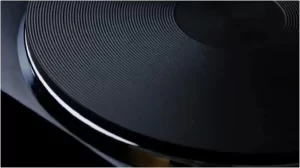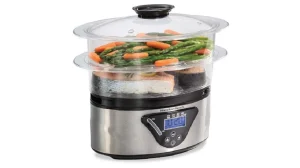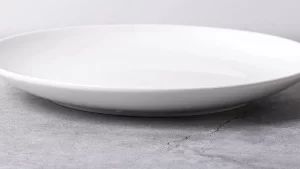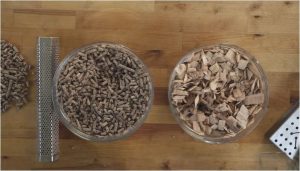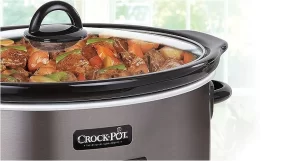Wooden Spoon Vs. Silicone: Which One Better?
Note: This article may contain affiliate links, which means if you make a purchase following our links won’t cost you extra, but we may earn a commission. Learn more
Wooden spoons have been a culinary staple for centuries. They are biodegradable, do not conduct heat, and will not scratch non-stick pans. On the flip side, wooden spoons can absorb flavors, and colors, and may harbor bacteria if not properly cared for. They are ideal for use in delicate cooking tasks like stirring sauces or sautéing vegetables.
In contrast, silicone utensils are relatively new to the cooking scene but are gaining popularity fast. Silicone cooking utensils are flexible, non-reactive, and can withstand high temperatures. They are also easy to clean, and unlike wooden utensils, they don’t retain flavors or odors. This makes them a great choice for working with pungent or acidic ingredients.
So, the answer often lies in personal preference and specific cooking needs. If environmental concerns and aesthetics are your priority, you might lean towards wooden cooking utensils. If you’re looking for something that can handle a wider range of tasks and is easier to maintain, silicone might be your choice.
Read More: Wooden Spoon Vs. Stainless Steel: Choose the Right One
Wooden Spoon: Key Features and Advantages of Uses
Wooden spoons, a timeless kitchen tool, have features that make them highly desirable in various culinary applications.
1. Aesthetic Appeal
Wooden spoons bring a classic, natural beauty to any kitchen. Their warm appearance enhances the cooking experience, often imparting a sense of tradition and nostalgia.
2. Gentle on Cookware
Unlike metal utensils, wooden spoons won’t scratch or damage the surfaces of non-stick pots and pans, preserving the lifespan of your cookware.
3. Heat Insulation
Wood doesn’t conduct heat, so wooden spoons remain cool to the touch, even in hot liquids. This ensures comfortable handling during prolonged cooking tasks.
4. Eco-Friendliness
Being biodegradable, wooden spoons are often favored by those concerned with sustainability. They leave a smaller environmental footprint compared to their plastic counterparts.
Silicone Spoon: Key Features and Advantages of Uses
Silicone spoons have carved out a significant space in modern kitchens, owing to several advantageous features.
1. Flexibility and Strength
The flexibility of silicone allows for easy scraping and stirring, while its inherent strength ensures it won’t break under pressure.
2. Heat Resistance
Silicone can withstand extreme temperatures without melting or deforming, making it suitable for various cooking methods, including frying and baking.
3. Easy Cleaning
Food doesn’t stick to silicone, making cleaning a breeze. Most silicone spoons are also dishwasher safe, further simplifying maintenance.
4. Non-Reactivity
Silicone doesn’t react with foods, so flavors and colors remain unaltered. This makes it versatile for cooking a wide array of dishes.
Read More: Wooden Spoon Vs. Metal Spoon: Which One Is Better?
Best Silicone Spoon Spatula (OXO Good Grips Silicone Spoon Spatula)
The OXO Good Grips Silicone Spoon Spatula is a versatile and essential tool for any kitchen. Engineered with flexible edges, it ensures that every bit of ingredients is scraped from bowls and cookware, reducing waste and enhancing efficiency.
The spoon spatula’s long handle, featuring a sturdy nylon core, is thoughtfully designed to provide a soft, non-slip grip, elevating the user’s control and comfort.
Moreover, its non-scratch, heat-resistant silicone construction makes it safe for non-stick cookware, extending the life of your favorite pans and pots. The BPA-free aspect ensures a healthy cooking experience.

Highlighted Features
- Perfect for stirring, mixing, scraping
- Flexible edges for efficient use
- Sturdy nylon core handle
- Heat-resistant silicone
- BPA free
Compatible For
- Non-stick cookware
- Mixing and baking tasks
Where Need to Improve
- May be too flexible for heavy mixing
- Handle could be more ergonomic
Best Wooden Spoon Set (OXO Good Grips 3-Piece Wooden Spoon Set)
Embrace traditional elegance with the OXO Good Grips 3-Piece Wooden Spoon Set. Made of solid beech wood, these spoons bring a touch of classic warmth to any kitchen. The set includes three sizes to suit a variety of cooking needs. Each spoon features a comfortable handle designed for ease of use and a natural oil finish that adds aesthetic appeal.
The solid, one-piece construction ensures durability, and the spoons are safe for use with non-stick cookware. Though they require handwashing, the beauty and functionality they add to your culinary experience are well worth the effort.

Highlighted Features
- Solid beech wood construction
- Set includes three sizes
- Comfortable handles
- Non-stick cookware safe
- Natural oil finish
Compatible For
- Non-stick cookware
- Stirring, mixing, and serving
Where Need to Improve
- Requires careful handwashing
- May discolor with certain foods
Wooden Spoon Vs. Silicone: The Key Features Comparison
Wooden Spoon
1. Material and Aesthetic Appeal
Wooden spoons have a natural, rustic appearance that many find visually appealing. They can add a touch of warmth and tradition to the kitchen setting. The material is gentle on surfaces and won’t scratch pots and pans.
2. Heat Conductivity and Handling
Wood doesn’t conduct heat, making wooden spoons comfortable to handle during cooking. They’re suitable for stirring hot mixtures without the risk of the handle becoming too hot to touch.
3. Maintenance and Durability
Wooden spoons require proper care to maintain their integrity. They can absorb odors and stains, and exposure to extreme heat or dishwashers can cause them to crack or warp.
Silicone Utensils
1. Flexibility and Heat Resistance
Silicone utensils are highly flexible, allowing for precise control while cooking. They can withstand high temperatures, usually up to 500°F, without melting, making them suitable for a wide variety of cooking tasks.
2. Non-Reactive and Easy to Clean
Silicone doesn’t react with acidic or alkaline foods, so flavors and odors aren’t retained. This property also makes them easy to clean, as food doesn’t stick to the surface.
3. Environmental Considerations
While silicone is durable and can last for many years, it is not biodegradable. Unlike wooden spoons, silicone utensils might contribute to environmental concerns, particularly at the end of their lifecycle.
The Choosing Factors
The decision between wooden and silicone spoons depends on various personal and practical aspects.
1. Cooking Techniques and Preferences
Wooden spoons are excellent for slow and controlled cooking, such as simmering and sautéing. Silicone spoons, on the other hand, are suitable for more aggressive cooking methods due to their heat resistance and flexibility.
2. Aesthetic Taste
Some may opt for wooden spoons for their classic, timeless appeal, while others may be drawn to the modern and colorful designs of silicone spoons.
3. Environmental Impact
The environmental footprint of wooden and silicone spoons is different. Wooden spoons are biodegradable and renewable, while silicone spoons are durable but not biodegradable.
4. Budget Considerations
While both wooden and silicone spoons can be affordable, the quality and craftsmanship might influence the price, affecting the final decision.
Wooden Spoon vs Silicone: Uses
1. Wooden Spoons: Natural Touch in Cooking
Wooden spoons have been a kitchen staple for centuries, prized for their aesthetic appeal and functionality. They are known for their soft and gentle interaction with cookware, which helps preserve the surfaces of delicate pots and pans. Wooden spoons are perfect for stirring and mixing ingredients at various cooking temperatures.
They do not conduct heat as metals do, providing a comfortable grip. On the downside, wooden spoons can harbor bacteria if not properly cared for, and they may absorb strong flavors. Regular maintenance with mineral oil can prolong their life and preserve their appearance.

2. Silicone Spoons: Modern Versatility
In contrast to wooden utensils, silicone spoons have become popular in modern kitchens for their resilience and adaptability. These spoons are incredibly flexible and are capable of withstanding high temperatures without melting or deforming. The non-porous nature of silicone makes it resistant to staining and odor absorption.
Silicone spoons won’t scratch non-stick surfaces, and they are also dishwasher safe, making cleaning a breeze. The synthetic material, though less aesthetically pleasing than wood, offers a practical solution for various cooking tasks.
3. Choosing Between the Two: Context and Preference
Choosing between wooden and silicone spoons may depend on a variety of factors. Wooden spoons add a classic touch and are perfect for traditional cooking styles, whereas silicone spoons cater to a more contemporary kitchen environment. Consider the cookware you most often use, your cooking style, and your aesthetic preferences.
If you prioritize hygiene and easy maintenance, silicone might be the way to go. For those who appreciate natural materials and a more tactile connection with their food, wooden spoons may be more suitable. In the end, having both in your kitchen provides the flexibility to utilize each where they shine best.
Maintainance
Both wooden and silicone spoons require specific care to ensure longevity.
1. Wooden Spoons
They must be dried immediately after washing to prevent cracking or warping. Regular oiling helps maintain their finish and functionality.
2. Silicone Spoons
These can generally be cleaned in the dishwasher. Regular inspection for wear and tear is recommended, as damage to the surface can harbor bacteria.
Disadvantages
While both wooden and silicone spoons have many advantages, they also come with some drawbacks.
1. Wooden Spoons
Wooden spoons may absorb flavors and colors, affecting their use in different dishes. They may also become breeding grounds for bacteria if not dried properly. The need for handwashing might be seen as a disadvantage by some.
2. Silicone Spoons
Silicone spoons might retain strong odors if not cleaned promptly. Their inability to biodegrade might also be a concern for environmentally conscious individuals. While generally durable, low-quality silicone can degrade over time, leading to a less appealing appearance and potential health concerns.
Finally
In the comparison between wooden and silicone spoons, both present unique advantages that cater to different preferences and needs. Wooden spoons offer a classic appeal, gentle interaction with cookware, and an eco-friendly choice.
On the other hand, silicone spoons stand out for their flexibility, heat resistance, and ease of cleaning. The decision between the two often boils down to personal cooking style, aesthetic taste, and environmental concerns. Recognizing the specific attributes and limitations of each can guide a cook to the choice that best complements their kitchen and culinary pursuits.
